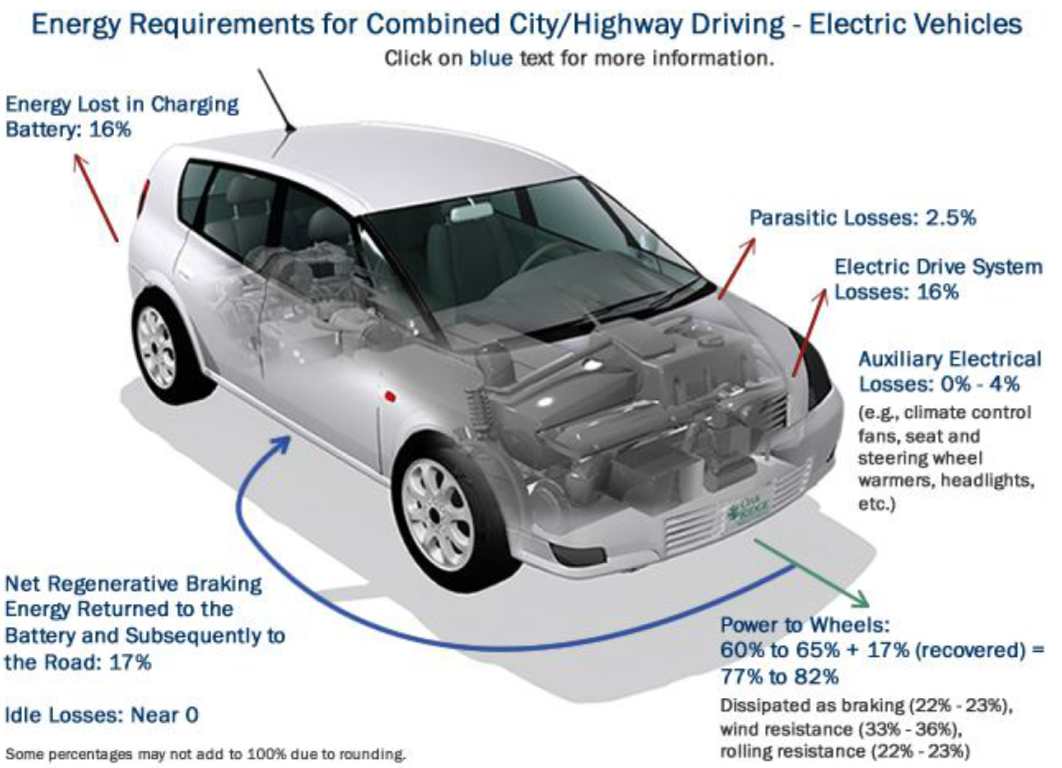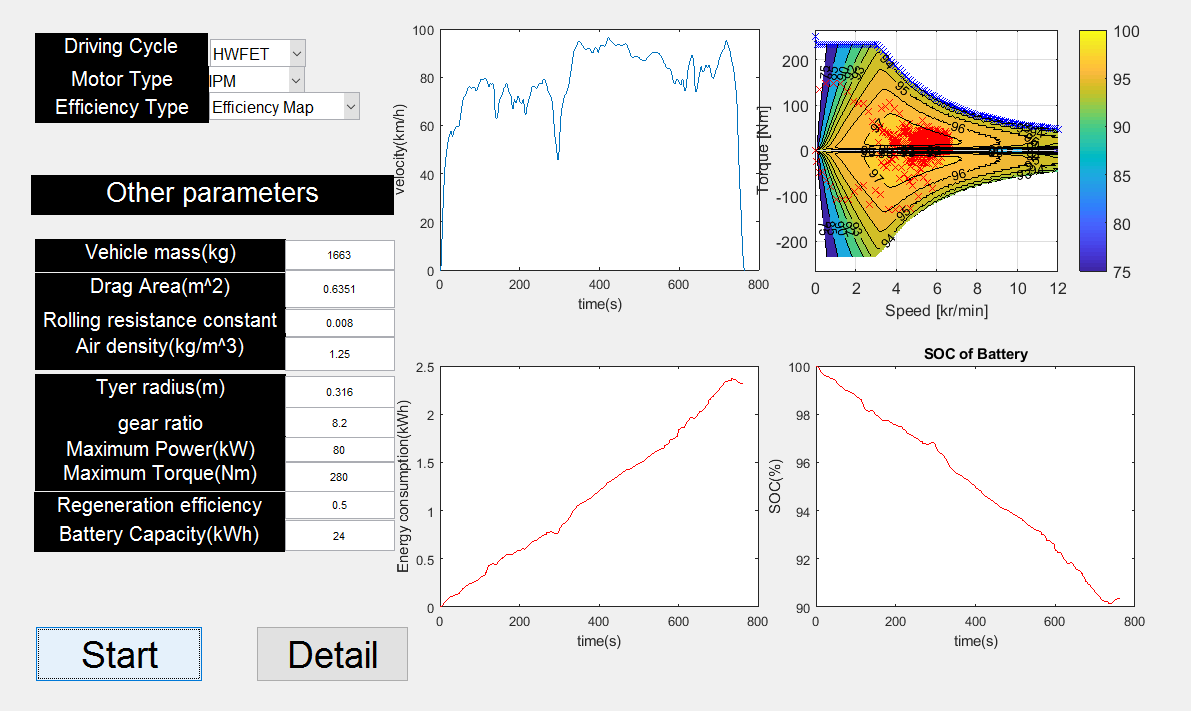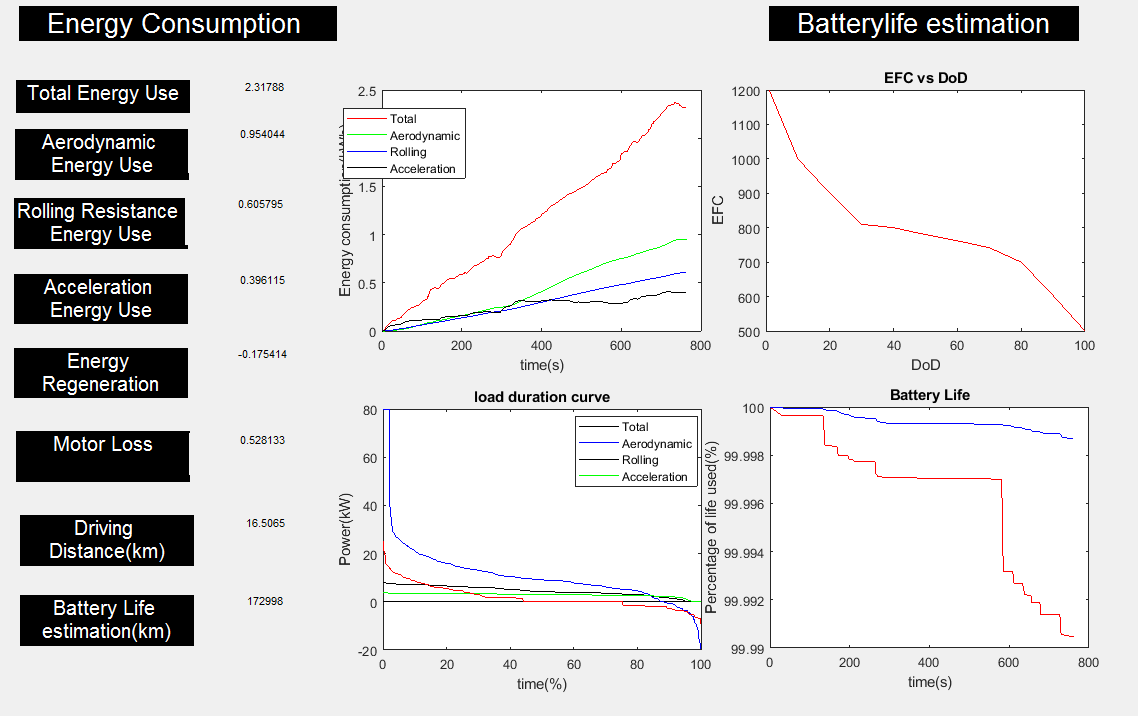Projects:2018s1-186 Calculation and Optimisation of Energy Usage of Electric Vehicles
Contents
Introduction
Project title: Calculation and Optimisation of Energy Usage of Electric Vehicles
Supervisors
Wen Soong, Nesimi Ertugrul
Team members
Majing Si, Guixi Deng
Abstract
Due to energy crisis and environmental issues, electric vehicles are regarded as a potential method to solve these energy and environmental problems. In addition, existing issues of electric vehicles, such as limited capability of battery storage and short battery life, etc., are required to be solved.
The first aim of the project is to produce a software used for calculation the energy usage and optimization performance of electric vehicles under a number of situations, including various driving cycles, battery regeneration effects and limits, different mechanical vehicle configurations and different motor types. The second main purpose is battery life study.
Driving cycles
Driving cycles are made up of a series of speeds and time points used to simulate different on-road situations of vehicles. Many countries and organisations have designed some driving cycles. These driving cycles can be used to assess the fuel energy consumption and the pollution gas emissions for conventional vehicles and electric power usage for electric vehicles. Some European Union driving cycles and U.S. driving cycles are widely used in academic vehicle studies and vehicle performance tests.
The traction system for EVs
Traction is the force which makes vehicle move and the direction is same as the vehicle motion. It is generated by the interaction of the motion of the wheels with the
ground. For electric vehicles, they require a transmission system to connect the battery system with the motor system. Tractive effort for EVs is the force that
makes wheels rotate.

Regenerative braking
In the electric vehicle braking system, apart from the traditional mechanical braking system, the electric regenerative braking system is also used to regenerate power. When the electric vehicle decreases its speed or go downhill, the wheels rotate and the electric motor is able to be transferred from a motor to a generator. The regeneration is able to generate electricity from mechanical power from the rotating wheels. The electricity can be used at once and the rest will be stored back into the battery.
Motor Efficiency
The motor efficiency is a significant part of energy consumption. It affects both motor loss and regeneration efficiency. In this project, three methods are used to assume and estimate the efficiency of the motor(efficiency map of motors, an efficiency curve using the referred equation and constant value). Different conditions show the different efficiency values and also under different driving cycles, the efficiencies have differences.
Battery life
Battery life is a measure of battery performance. The charging and discharging will both decrease the capacity of a battery. While the capacity of the battery decreases to 80%, the battery is out of use. Thus, this project is supposed to estimate the battery life to show the effects of other parameters and specifications on it.
Software Designing
The project is mainly based on the research of the effects on energy consumption and battery life. A software is designed on MATLAB to help obviously showing the results and figures. The software is based on MATLAB GUI (Graphical User Interface), designing to calculate and display the results of energy consumption and detailed information of loss, SOC and battery life estimation.

